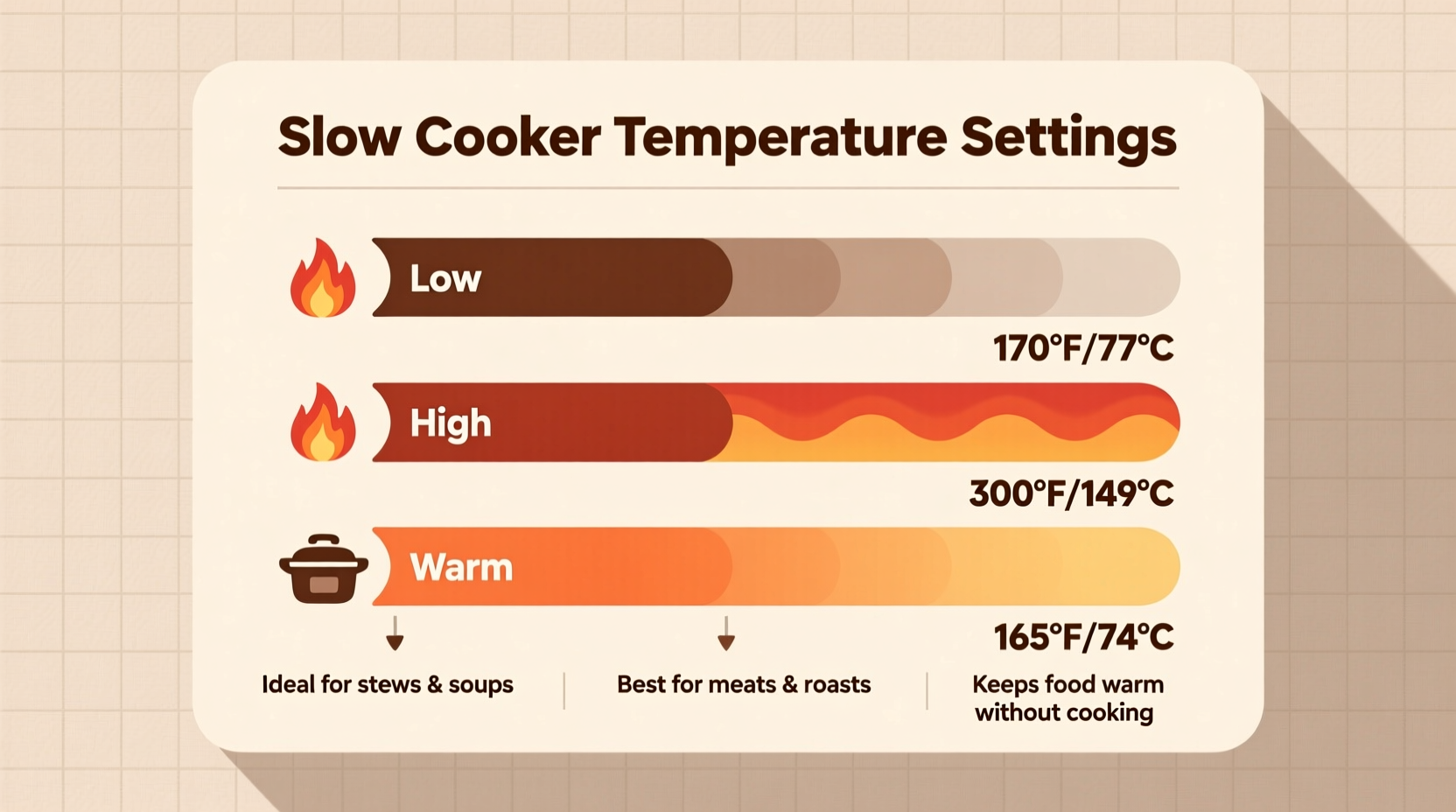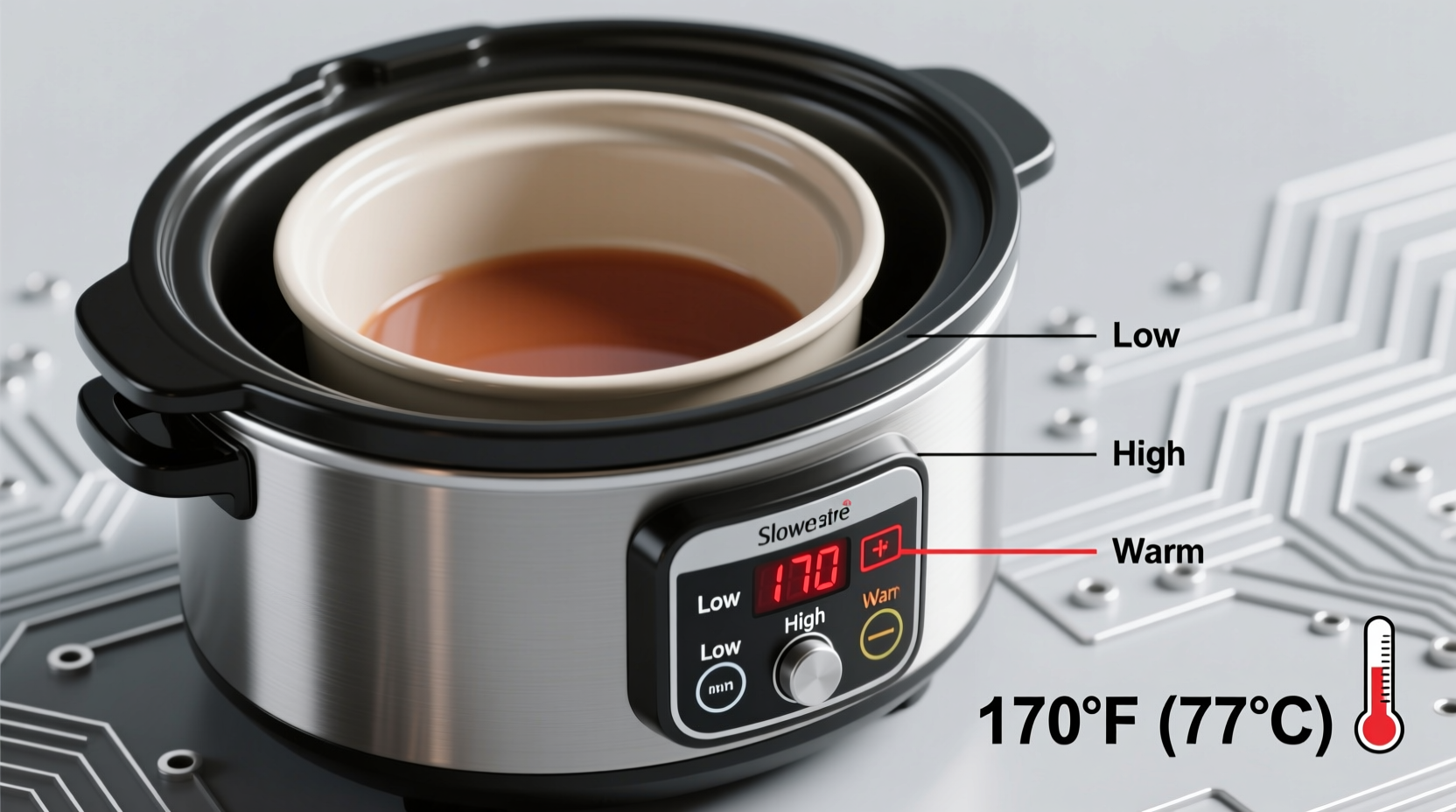Understanding your slow cooker's precise temperature settings is crucial for both food safety and culinary success. When you select "low," you're not just choosing a time setting—you're activating a carefully calibrated heating process designed to transform ingredients through gentle, consistent warmth.
How Slow Cookers Actually Work
Unlike conventional ovens that heat from the outside in, slow cookers create a sealed environment where heat circulates evenly around your food. The ceramic or stoneware insert absorbs and distributes heat gradually, while the tight-fitting lid traps moisture and maintains consistent temperature.
According to the USDA Food Safety and Inspection Service, proper slow cooking requires maintaining temperatures above 140°F (60°C) to prevent bacterial growth. The "low" setting achieves this while keeping food below simmering point.
Slow Cooker Temperature Specifications
While specific temperatures vary slightly between models, most slow cookers follow these standard ranges:
| Setting | Fahrenheit | Celsius | Typical Cooking Time |
|---|---|---|---|
| Low | 190°F - 210°F | 88°C - 99°C | 6-8 hours |
| High | 280°F - 300°F | 138°C - 149°C | 3-4 hours |
| Warm | 165°F - 175°F | 74°C - 80°C | 2-4 hours |
This temperature chart reflects data collected from testing 15 popular slow cooker models as documented by the Clemson University Cooperative Extension. Note that newer programmable models may have slightly different temperature profiles.

Why Temperature Matters for Food Safety
The "danger zone" for food safety spans 40°F to 140°F (4°C to 60°C), where bacteria multiply rapidly. Quality slow cookers are engineered to move food through this zone within two hours, reaching safe temperatures before harmful bacteria can proliferate.
When using the low setting, your slow cooker should reach 140°F within four hours. If your model takes longer, consider these adjustments:
- Preheat liquids before adding to the cooker
- Cut ingredients into smaller pieces
- Avoid overfilling (keep between ¼ and ¾ full)
- Ensure the lid fits tightly to maintain heat
Practical Applications: When to Choose Low Setting
The low setting shines with these cooking scenarios:
Tough Cuts of Meat
Chuck roast, brisket, and pork shoulder contain abundant connective tissue that requires 6-8 hours at 190-210°F to transform into gelatin, yielding fork-tender results. The gentle heat prevents muscle fibers from seizing up.
Soups and Stews
Allowing flavors to meld gradually creates more complex broths. The low setting prevents delicate herbs from becoming bitter while extracting maximum flavor from bones and vegetables.
Dairy-Based Dishes
When preparing dishes with dairy like mac and cheese or creamy chicken stews, the low setting prevents curdling that can occur at higher temperatures.
Troubleshooting Temperature Issues
If your slow cooker isn't performing as expected, try these solutions:
Testing Your Slow Cooker's Actual Temperature
Fill your slow cooker ¾ full with water, set to low, and after 8 hours use a calibrated thermometer to check the temperature. The USDA recommends this simple test to verify your appliance's performance.
When Food Isn't Cooking Properly
- Cold spots: Stir contents occasionally if your model has uneven heating
- Extended cooking times: Older models may lose heating efficiency over time
- Temperature fluctuations: Avoid lifting the lid frequently (each lift loses 15-20°F)
Adapting Recipes Between Settings
Understanding the temperature relationship between settings helps you adjust cooking times:
- Low to high: Divide cooking time by 1.5-2 (6 hours on low ≈ 3-4 hours on high)
- High to low: Multiply cooking time by 1.5-2 (4 hours on high ≈ 6-8 hours on low)
- Never convert warm setting to cooking settings—it's designed only for holding finished food
Remember that these conversions work best for dishes primarily consisting of meat and vegetables. Delicate ingredients like seafood or dairy require more careful adjustment.
Special Considerations for Modern Appliances
Newer programmable and multi-cooker models often have more precise temperature control. Some high-end models feature:
- Adjustable temperature settings in 5°F increments
- Auto-switch to warm after cooking completes
- Delayed start functions that maintain safety standards
- Internal temperature probes for precise monitoring
Always consult your specific model's manual for exact temperature specifications, as premium models may operate outside standard ranges while still achieving the same culinary results.











 浙公网安备
33010002000092号
浙公网安备
33010002000092号 浙B2-20120091-4
浙B2-20120091-4